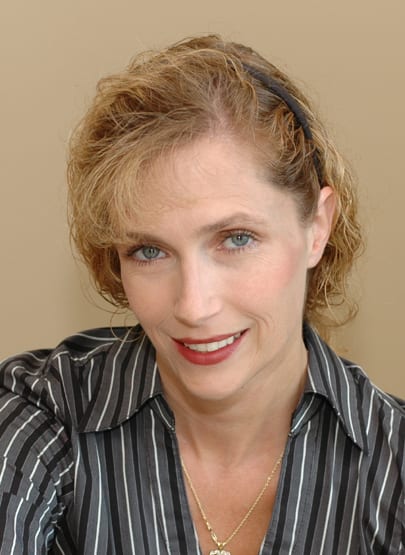 Do
Do  want to use (or better use) Google Adwords to drive traffic to your products and services?
want to use (or better use) Google Adwords to drive traffic to your products and services?
Did you know that Adwords is also one of the most powerful tools there is for testing your market and figuring out whether you are even offering the right products ans services – and who is likely to buy them?
Those are the kinds of topics covered in this episode of the Learning Revolution podcast. I’m joined this time around by Howie Jacobson and Kristie McDonald, two people who literally wrote the book on Adwords: Google Adwords for Dummies, 3rd Edition.
AdWords, of course, are those text based ads that appear to the right and top of Google search results. They can be very powerful not just for driving traffic to your offerings, but as Howie and Kristie will make clear, for really assessing and understanding your market.
Listen in for some insights and tips that will really help your grow your business. Also, pay attention for an offer I make to get a free copy of Leading the Learning Revolution: The Expert’s Guide to Capitalizing on the Exploding Lifelong Education Market.
Play the Podcast
Podcast: Play in new window | Download | iTunes
Get the Show Notes
01:22 – Listen in for a special announcement and offer on the book Leading the Learning Revolution.
03:55 – Introduction of Howie Jacobson and Kristie McDonald, co-authors of Google Adwords for Dummies, 3rd Edition and principals of the digital marketing agency Vitruvian Way.
04:33 – How the Internet has changed everything. Here’s a quote we discuss from white paper Howie wrote:
The Internet does more than just make it easy to go online and read and leave reviews. It fundamentally changes the mathematical and statistical models of human crowd behavior. Because choice increases exponentially while attention remains constant, aggregate human behavior shifts to follow what are known as “power laws.” (Get the white paper: The Hidden Power of Paid Search)
05:25 – The Internet allows us to analyze what people want by looking at what they do. Adwords is not just a way to get sales: it is a way to test and tune human behavior.
06:45 – Traditional marketing is based on a fairly static “village” model in which everyone gets their piece of the pie. Because there is such an aggregation of the crowd through the Internet, there is almost an infinite number of choices and an infinite number of people looking to satisfy their needs. Loyalty is not a given; the fundamentals of market share shift, and someone who is just slightly better can claim the vast majority of the market. The idea of the “slight advantage.”
09:05 – Doing something (even something small) that no one else is doing can tilt the weight of the entire market into your corner.
09:20 – A lot of traditional membership organizations act as villages – and are suddenly finding themselves disrupted.
11:10 – Starting out with good reviews (e.g., for a product) can make all the difference. Someone who starts out with a few good reviews can create a big advantage because of the impact it has on Google searchers – which leads to more good reviews). A slight advantage can snowball.
12:00 – People don’t tend to recognize how Adwords can be used as a market assessment tool. Discussion of using Adwords from the standpoint of an entrenched player vs. a newcomer. Should they assess their markets in the same way?
13:00 – Whether entrenched or new, the key is how you are going to stand out. The entrenched really have to keep an eye on who is coming onto the playing field, what they are saying that is new, and how it is changing the dynamic. New players tend to pay more attention to this, entrenched players forget.
15:30 – Howie’s “though experiment” – is it better to be the entrenched player or the scrappy newcomer? The minute you are successful, start worrying about market blindness or complacency.
16:50 – But at least in theory the entrenched player has a better connection to the market – you can talk to your customers, whereas as new comer will just be viewed as trolling for sales. The entrenched player needs at least some people on staff who are “brainwashed” to think like an upstart – and then use what they see to inform conversations with existing customers.
18:18 – Adwords-driven assessment is crucial, but also superficial when compared to actual customer conversations. Use Adwords to point you in the right direction so you can go have dinner with people.
18:50 – What if you are solo, or work for a small organization and don’t have a lot of budget or time to put into Adwords? What are the two or three things you should absolutely do?
18:37 – You have to analyze the market for your bullseye, your “Dorothy Boyd.”
Howie and Kristie talk about how to approach Adwords if your resources are tight (quote used in Leading the Learning Revolution):
Kristie:
When somebody doesn’t have a lot of budget to work with, and they’re looking to run a PPC campaign that is small and tight, what we tell them to do is analyze their market for their bull’s-eye. What are the bull’s-eye terms in your market—the terms that, if somebody types them in, their intent absolutely is to buy what you have? They are looking for you. They are looking for what you have.For example, if somebody is looking to be certified by the Proj- ect Management Institute, and they type in “PMI Online Courses,” they’re clearly looking for you if you sell PMI courses. And you need to be there when they’re looking, because otherwise your competi- tors will get them instead. If you have a small budget, you just need to look at your core terms. Don’t try to experiment with other ones. Just use the core ones. What would somebody ask for if they were looking exactly for me? Then run that campaign.
Howie:
One of the functions of AdWords, or any sort of pay-per-click, is to test the rest of your sales funnel. It may be that AdWords is not the place where you’re going to “kill it.” There may not be a lot of traffic, or people may not be searching for it. It may be an impulse buy or your competition has a business model that just makes it too expensive for you to advertise successfully for long.But if you have an
online business these days, the website is the nexus for whether people end up interested in you or not. And that’s how I would initially use PPC—to do what Kristie says. To fig- ure out, “Who’s my bull’s-eye?” Who are the people that I call the “Dorothy Boyd prospects”? Remember? That was Renée Zellweger’s character in Jerry Maguire—the one he “had at hello.” With your Dorothy Boyd prospects, you say “This is what I do,” and they say, “That’s exactly what I want.” If you can’t sell to those people, why bother with anybody else?
21:20 – Social media and SEO are only “guessing” at who your market is and where you are going to find them. Pay per click – if it is done right – may involve an initial guess, but then it is testing – it gives you clear data to back up your efforts.
23:20 – Selling is selling, but the training industry has some specific challenges online. One of these is that the Internet has evolved into a medium of selling through education. But if what you are selling is education, it can be a slippery slope. You have to “tease with integrity.”
24:40 – Discussion of the Vitruvian Way Cafe – which will become a paid membership learning community. Discussion of what/how much it makes sense to give so much away for free, and when it makes sense to charge.
Creating Keyword Buckets: A Freebie from Virtuvian Way
27:30 – Even with all of the information they have given away in Adwords for Dummies, people still reach out to them for more. It often happens that the more information people get about a topic they more they appreciate the difference between themselves and the true experts – and they are willing to pay for access to deep expertise. They key is to provide value each step of the way as you interact with your prospects and customers.
29:12 – The content is often less important than the way it is delivered and your emotional connection to the person who is delivering it and their ability to customize it to you.
29:45 – What made the membership site model for Vitruvian Way Cafe attractive? Why not just set up a catalog of courses? Was it a way to build emotional connection as apposed to a more transactional model.
30:45 – Yes, there is more of a connection when people are in a community – and there is the social aspect of connecting with others who are wrestling with the same questions you are. It not only connects you with customers, it makes them never want to leave.
33:30 -Parting words of wisdom. Really have to move from a transactional to a relationship model if you are in a market that is at all competitive – but you have to be open with people about how you make money. Money changes the dynamics of relationships. Your business model is synonymous with building mutually beneficial relationships. The hard numbers of Adwords can point you to how you do this.
36:15 – Interview wrap up. Be sure to visit:
37:44 – Sign off
Thanks so much for tuning into the Learning Revolution. If you find the podcast valuable, please consider sharing it with others by clicking https://www.learningrevolution.net/share to send out a tweet. I’d also be really grateful if you would consider doing a brief review or giving the podcast a rating on iTunes.
Podcast: Play in new window | Download | iTunes
The theme music for Learning Revolution is The Information Age by Anthony Fiumano, available on the Podsafe Music Network.
P.S. – I’ll be releasing The Learning Revolutionary’s Toolbox next week. To receive a free copy, be sure to sign up to get update e-mails! – Jeff
Related Posts
A Creator’s Guide to Understanding the YouTube Super Chat Feature
Thinkific Funnels: A Guide to Boosting Your Business Revenue with Sales Funnels
From Course Creator to Digital Empire: Inside Kajabi’s Bold Transformation